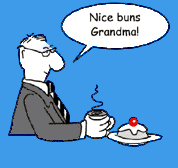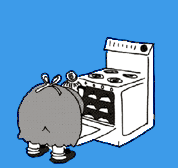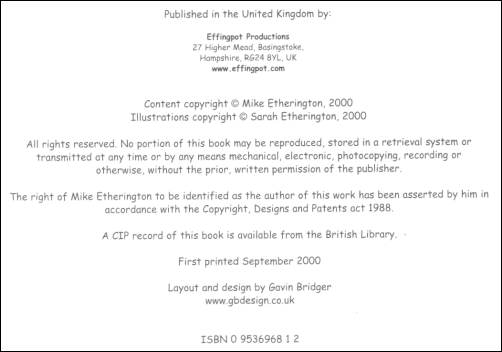
How to Publish Yourself in the UK

When it comes to making the book the most important part is the content. Presumably if you are reading this then that part of the process has already happened - you have an idea, you have something burning inside you that wants to come out in written form, maybe you've spotted a gap in the market or maybe you've even written the whole thing on your PC and just don't know what to do next.
One of the first things you might want to consider - and this varies on the type of book you have in mind - is to look at the competition. If your book is a personal collection of poems then clearly the material will be unique, but there are lots of poetry books out there and yours needs to be different. If you have written a 'guide to publishing' for example, you would find that there are lots of similar books already out there that cover much of the same content as this website. (Why do you think I have not published this!).
Once you have decided that the book you have in mind is worth writing then you need to write it. Use a word processor to start with - you'll probably want to edit and change it many, many times before it goes final. You probably ought to plan the book on a piece of paper - simply break it down into the chapters, what each will contain, whether it needs an index, a table of contents, a foreword, you'll need a page of bibliographic data, there will be blank pages (the back of some pages you'll want blank), each chapter will need to start on a facing page and so on.
When you have the basic outline mapped out you just need to write it and lay it all out. Do that and come back to this point in several months when you are ready.
Welcome back! Did you think about pictures, illustrations or other images? One thing that makes most books more interesting is pictures. As a self-publisher they provide an interesting challenge. One thing you'll notice as we go through this is that we aim to keep our costs down. Pictures cost money. Well potentially they do. You may need to pay for them to be drawn, for photos or for use of other people's copyright. If they are colour then it'll cost more to print them. You'll also need to have them positioned properly amongst your text which will need someone to do some extra work - which may cost extra too.
So be careful about what sort, how many and the colour of your pictures. If they are all line drawings and you can do them yourself then great!
So how do you make the book? Different printers will take your work in varying formats. When we did our book they all wanted Quark Express files. These days there are more choices and printers can even take word files, pdfs or InDesign and of course, Quark Express is still around. They key thing is to talk to you preferred printer and make sure you know what you need to provide. If you don’t know how to use the package, do what I did and find a chum that does! 😃
If you don't have a chum in this category - either get one, or go to a printers or graphics company to do it - but it will be an expensive option and that defeats the object of the exercise. My chum was a student from a graphics course who wanted to build his portfolio. With his Mac in his bedroom he dedicated hours to my little book and it paid off. He did a great job.
Once you have written and designed the contents of your book, you need to consider the cover. The cover - the front and the back - are very important. After all, if this thing is to sell we need to:
This may sound like common sense but it is a linear process, where each step only happens if the previous one does. So, on the assumption that we can get it into bookshops (we'll cover that later), we need people to see it on the shelf and then pick it up and read the front cover, then the back. These are your first opportunities to sell your work of art, so make it good.
Take a trip round a bookshop and see what I mean. Most of the books are stuck on a shelf with the cover invisible, and the spine is the only part you can see. This is where you start. In most cases only the title and maybe the author name will appear on the spine. After all there is not much space.
So you need to start with your title. In order for it to do the job, it needs to be short, snappy and give some idea of what is in the book. If it is too long, it will be truncated on most computer systems, so people will only see the first part, it also won't fit on the cover. If it is too obscure then people will miss the point and won't know what the book is about (this may be what you want of course) and if it is not in any way related to the content then it will not help you to get people to the next stage - the front cover.
The front cover may be the first thing people see if you are lucky enough to have your book featured on a till point or feature table, where it is placed with the cover facing out. Or the spine may have done the job and the potential customer now has your wonderful book in their hand. What does the cover need to do? Well clearly it needs to do a similar job to the spine, but obviously you have more space (unless your design has gone completely up the spout!). As you look around the bookshop you'll see the use of colour, witty titles, authors’ names prominent, pictures, subtitles and sometimes references, quotes or awards that prove this is the best thing in the bookshop. Well we don't have the last bit so we need to work on the title, subtitle and the rest of the cover.
We already discussed the title. The subtitle gives you an opportunity to explain the title in a little more detail to draw the reader further into the desire to buy your book. In my case the title is "The Very Best of British". Combined with the UK and US flags at each end, it starts to give some clues about the nature of the book. The font is a slightly frivolous one, which helps to portray the humour aspect of the book. The subtitle is "The American's Guide to Speaking British". This is the first point the reader actually finds out what the book is about.
To emphasise the point, the cartoon on the front is a simple, single picture that makes a joke of a US/UK word difference that is immediately (hopefully) understood and (also hopefully) funny. If it gets a snigger then I'm happy.
If the spine and cover have done their job and the prospective buyer is now wondering with excitement what the book contains in a little more detail, the chances are they will turn it over and look at the back. This is your final opportunity to entice them to open the book and then convince themselves they want it. The words on the back need to entice the reader in, tease them with snippets of content, précis what they will get from the book and leave them wanting more.
Again, looking at books with this thought process in mind will help you see what the publishers were trying to do. You need to spend time to think the spine and the front and back covers through. Don't leave it till the last moment, after everything else is done and the printer is hassling you for the files - plan it and get it right. If you don't, you'll regret it.
Most books on self-publishing will tell you that books are made up of pages. That facing pages on the right are called "recto" and the back of them is called the "verso". They will tell you about title pages, half titles, blanks and bibliographic pages. In my view you should lay the book out in the way that is best for you. Of course, you probably want to follow tradition and put chapter titles on recto pages with a blank verso and start the chapter on the next recto and you will probably want a title page.
A key page though, is the bibliographic page. This is the one that is usually on the back (the verso) of the Title page. You should look at lots of these to get some idea of how far you want to go. There are some things that are optional and some that are not. What you choose is pretty much up to you.
Here is the bibliographic page from my book:

You'll notice the contents are as follows:
The rest is basically optional. You may choose to reference your printers (not sure why people do this - maybe they get a discount) or you might mention your designer (in return for their excellent value services!).
Once again, it is well worth flicking through similar books to your own to get a feel for what you want to include on this page and how. Also, this is another job that should not be put off till the end. Plan it, do it right, and you'll be glad you did.
Every book is issued an International Standard Book Number (ISBN) - or should be - if you want anyone in the world to be able to find it, that is! Since 2007 all ISBNs are 13 digits long, replacing the old 10 digit format. Getting your hands on your ISBN is actually very easy.
Basically Nielsen manages the process in the UK and you just order ISBN from them. ISBNs are sold singly or in blocks of 10 (or 100 and 1000). So before you apply for your first ISBN, you need to decide how many you need. Even a revision of your single book should have a new ISBN, so you may want to buy 10 rather than just the one and have to start again for the second edition. My book was revised and reprinted so having 10 turned out to be a good decision.
You can purchase your ISBNs at nielsenisbnstore.com or write to them.
Your ISBN(s) will arrive with instructions.
Yes you do! Your printer will need the barcode image, unless they can create it for you from the ISBN – check first. The provision of a barcode may well already be in your contract! When you look at the barcode graphic, the ISBN should sit above the graphic, complete with hyphenation, and below the graphic the same ISBN should appear, but unhyphenated.
Nielsen Book also provide barcodes which can be purchased from their online store for £15 each. There are also other companies that will sell you a barcode (See Useful Links below). They just ask you for the ISBN and do the rest for you.
I have always used Axicon and been impressed with the price and the speed of service. I have not used any others so can't comment on them.
In our bibliographic data you will normally also include a publication date. This is the date on which you unleash your newly printed work of art onto an unsuspecting public.
Of course, having never done this before - guessing when to put is a bit if a shot in the dark. However, given the list of jobs that need to be done and the lead time from the printers you will probably have an idea. It will probably be several months in the future at the time you start thinking about it. It is worth giving yourself a target date, as you will need to announce this date to the book trade in advance and hopefully - orders will start to arrive on the date you have set. So be careful to make it achievable.
Copyright gives the creators of a wide range of material, including literature, economic rights enabling them to control use of their material in a number of ways, such as by making copies, issuing copies to the public, performing in public, broadcasting and use on-line. It also gives moral rights to be identified as the creator of certain kinds of material, and to object to distortion or mutilation of it.
In the UK there is no requirement to register copyright. Simply by going to print or publishing on the web, with the appropriate copyright information visible to the viewing public, you have asserted your copyright.
We assume in this guide that your material and work is all unique and, therefore, that the copyright is yours. If you are using material which is, or may be, copyrighted then you need to write to the copyright owner and get written permission to use the material. Likewise, by stating your own copyright in your book, others will need to do the same if they want to use your content.
If you need more information on copyright, refer to the Copyright Licencing Agency (CLA) or the Intellectual Property pages of the Patents Office for the UK, using the links below.
I had an idea of what I wanted the book to look like since it had already been published on the web for two years. The chapters were decided, the size was decided, even the pictures were done.
For the print version I did decide to add an index and we decided to redraw all the pictures so that they could all be scanned at the same standard so that they would look consistent in the book.
I had a chum who agreed to make the Quark files of the book for me in return for being mentioned in the bibliographic page, some free copies for his portfolio and a little beer money. He also scanned all the images for me and put the lot onto a CD for me to take to the printer.
The ISBN and barcode were easy to order and add to the files.
I spent a lot of time looking at other books to decide how much information to put in the bibliographic page and the result is shown above.
The final part of the cover was the price. Looking at other books of a similar ilk we decided that £5.00 seemed about right. Of course, the first time you have no idea what the right price is. But it is very important. After all, from the price, you need to take a bookshop discount, maybe some distributor costs, postage, print costs and so on. Whatever is left is yours. In our first print run the unit print cost was £1.50, to ship one copy cost 76P and the average bookshop discount was £1.65, leaving a grand total of £5.00 - £1.50 - £0.76 - £1.65 = £1.09 for me, assuming no other costs. Of course, shipping reduces per book if you can sell more than 1 at a time but even so - at about £1 profit per book it is very important to make sure the price is right and your costs and risk are minimal.
Interestingly, when we redesigned and republished the second edition, we increased the price to £6.50 and worried about how much sales would drop as a result. Amazingly, sales have increased, and of course, so have profits. So it is as important to make sure you charge enough! After all, a higher price does give an impression of higher value too.
Copyright has been interesting. I have had numerous requests to use the words or pictures from our book, on other sites across the internet. One American Expat site has even turned our work into an amusing page just for the fun of their community, as has the Telephone Bar and Grill in New York City. In each case the owner of the site has written to me for permission to use the content, which I have granted.
We were also approached by a company in Germany that creates textbook for German schools, as they wanted to write a study of Chuck and Charles, the cartoon characters in the book. They purchased the rights to use the materials in their own and recognise us as the copyright owners within the pages of their text book.
The whole business is fascinating and it gives you a real buzz to see your work appearing in other places, especially when it has been paid for!